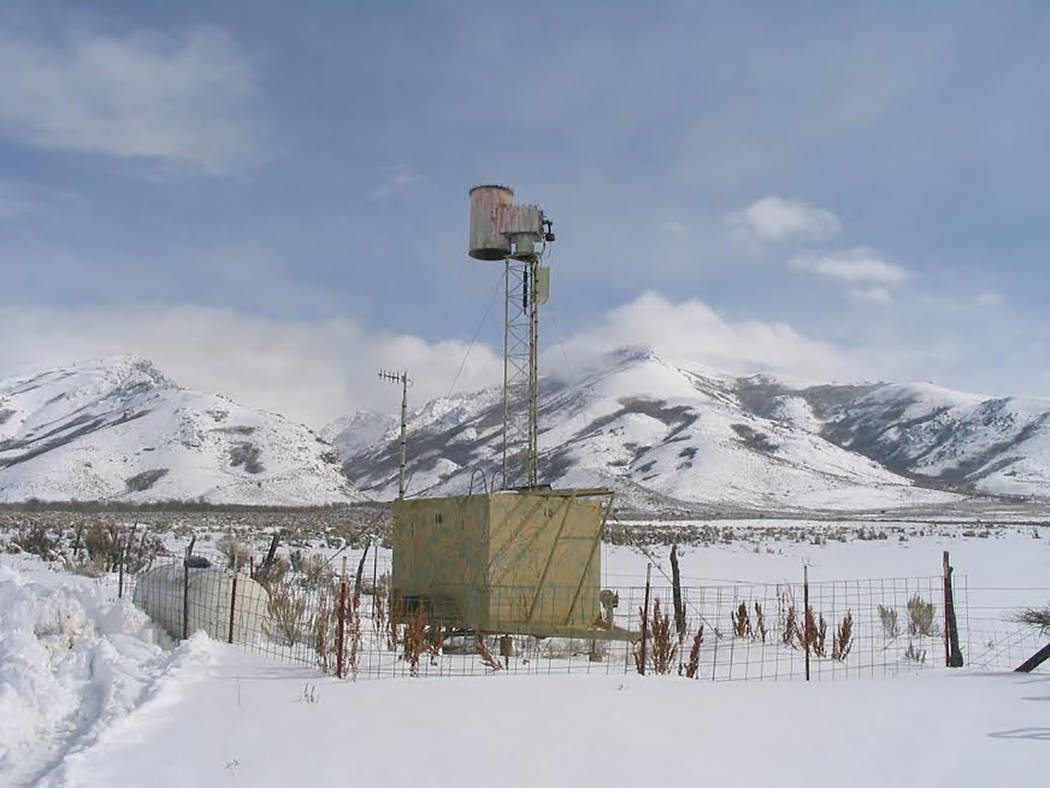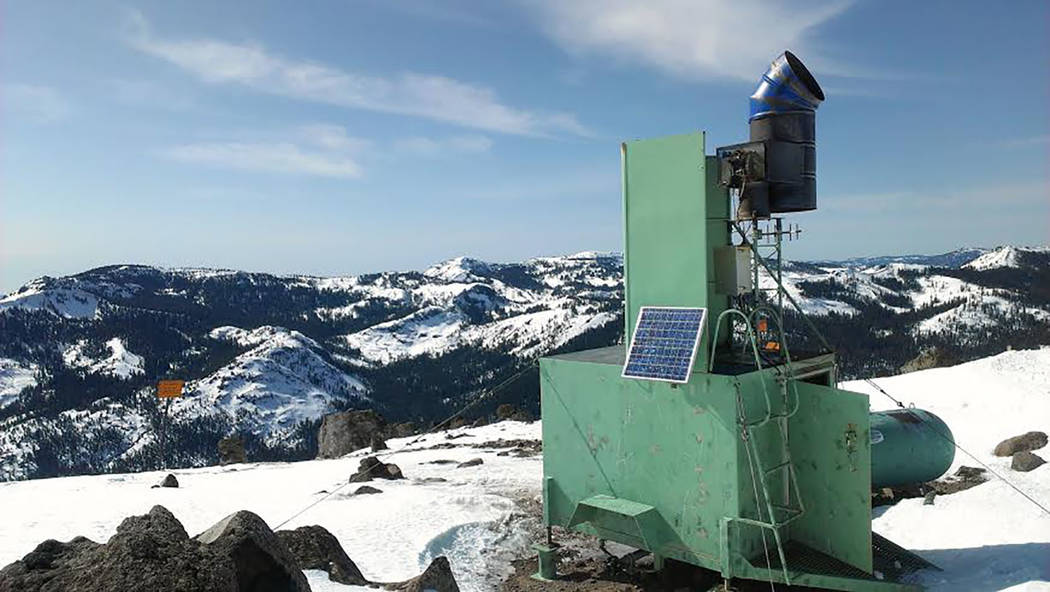Cloud seeding could benefit stressed water supply in Pahrump
During the 2017 Nevada Legislative Session, lawmakers agreed on an allocation of $680,000 in state funding for a one-year cloud seeding project to be performed by the Desert Research Institute which, if successful, could bring additional snow to mountain ranges all around the state.
The project, set to begin in the winter season of 2018-2019, may also have a direct benefit for those in the Pahrump area by bringing additional water recharge to the stressed water basins surrounding the Spring Mountains. Included in those that could see a positive impact is Pahrump Basin #162, the sole source of water for those living and doing business in the valley.
Frank McDonough, DRI Nevada State Cloud Seeding Program director, took time on Jan. 25 to explain the project.
“The final goal is to add snow to the mountains, to add runoff and eventual infiltration to increase groundwater supplies,” McDonough, a meteorologist with 20-plus years’ experience, stated. “Runoff percolates in as it moves downstream, so both sides of the Spring Mountains will hopefully have increased water. The Pahrump side should see some improvement in the groundwater supplies.”
The science
McDonough also delved into the science of cloud seeding, noting that unlike some believe, the idea is not to create clouds but rather to harness them when they are available.
Cloud seeding is only possible when clouds are already in evidence and temperatures within the clouds are 23 degrees or below. Pollution has been shown to stymie the ability of a cloud’s liquid water drops to transform into ice, McDonough informed, even when those water drops are below the freezing point. Cloud seeding helps bring about the freezing necessary to produce snow.
“When a storm is moving over the Spring Mountains and the cloud base becomes low enough that you can’t really see the mountains at all, you can introduce these dust particles that are made out of silver iodide and they will go in and initiate some freezing events of these liquid water drops. And once you create some small ice crystals, the entire cloud will convert to ice and it will snow out. So instead of a fog bank sitting over the mountains, you actually end up with an inch or two more of snowfall,” McDonough detailed.
Environmental concerns
Environmental impacts are obviously a matter for continued monitoring but thus far, McDonough said there have been no adverse effects detected in the decades since cloud seeding came into existence. DRI itself has been conducting cloud seeding since the early 1970s and McDonough assured that the silver iodide used would not harm the environment.
“Silver iodide is a naturally-occurring molecule that has no chemical charge and it stays as a solid and it is insoluble. Plants can’t absorb it because it is not dissolved in the water, so it doesn’t become part of the ecosystem. It never breaks apart into its component pieces and so it basically stays as a dust in the ground or as sediment in the streams,” McDonough said, noting that the release rate of the silver iodide is less than one ounce per hour, which is spread over 35 square miles.
McDonough also referenced a study performed comparing samples from areas where longstanding cloud seeding has taken place to those from areas that have never seen cloud seeding. “They can’t find any difference in the amount of silver,” McDonough stated. “And it is continuously being studied. That is part of this project as well, monitoring that in the snowfall that will hopefully be created by the project.
As for physical impacts from the project, McDonough said the target mountain ranges will see no construction, building or felling of trees. The cloud seeding machines will be moved into their locations on a trailer and will only be present until the completion of the project, after which they will be removed.
Plan of action
The $680,000 allocation is enough to fund one year of the project but if it proves successful and state lawmakers are amenable, further funding could be seen in the future. Currently, DRI is focusing on the preparations necessary to conduct the project for next winter.
“This first year has a lot of one-time infrastructure production, project design, public meetings and equipment siting, research of storm climatologies, development of weather forecasting and observational tools, which will only need to be done once,” McDonough explained.
“The silver iodide consumables, accounts for the communications system, equipment maintenance and travel to work on the equipment in the field, and weather forecasting and operations would be the annual requirements,” he said.
The goal, he said, is to produce additional snowpack at a cost of about $10-$15 an acre-foot.
A public meeting on the cloud seeding project is set for 2 to 4 p.m. on Friday, Feb. 2 at the Las Vegas Centennial Hills Library, at 6711 N. Buffalo Drive in Las Vegas. Attendees can learn more about the project and provide comment and feedback. Comments can also be forwarded to Jeffrey Dean, 5276 Texas Ave., Reno, Nevada, 89506 or via phone at 775-677-3141.
Contact reporter Robin Hebrock at rhebrock@pvtimes.com. On Twitter: @pvtimes
Targets for Cloud Seeding
The Desert Research Institute plans to perform cloud seeding in four specific locations throughout the winter of 2018/2019. Included in the first year of the project are:
- The Spring Mountains, located in Nye County and Clark County.
- The Ruby Mountains, located predominantly in Elko County with a small portion in White Pine County.
- The Tuscarora Mountains, located in Elko County.
- Three watersheds on the east slopes of the Seirra Nevada, bordering California.


















